Article
[Editor's note: Following is an updated version of an article that originally appeared in the October 2011 issue of Informer: The History of American Crime and Law Enforcement.]
Declassified Federal Bureau of Investigations (FBI) documents show that more than ten Chicago Outfit members began to "talk" soon after Sam Giancana was deposed as boss and fled Chicago. The turnaround, up from virtually zero high-value informants in 1965, was due primarily to a more aggressive approach by law enforcement and the ongoing turmoil within the Outfit after a succession of bosses were quickly jailed.1
Trying to umask any of these secret informers is hampered by the FBI's use of informant symbol codes that hide true identities and make it hard to tell one informant from another. But sometimes a system designed to conceal a mobster's identity can actually lead you right to him.
Making use of clues left in FBI documents a half century ago, we'll put two mobsters under the spotlight: one was an old-time La Cosa Nostra (LCN) member who saw the light before he died, and the other was a legendary Chicago mobster that FBI agents indicated was an informant.
Informant Profile
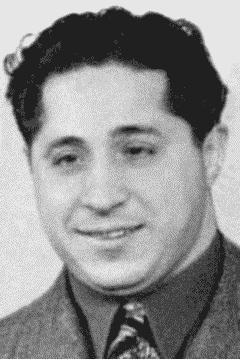
Louis Fratto
In March 1967, a Chicago Outfit member began to share confidential information with federal agents. FBI documents described him as a "Omaha top echelon criminal informant... who was veteran member of La Cosa Nostra and a friend of [Teamster Union boss James] Hoffa." At a time when the FBI was still in the dark about some aspects of the Outfit structure and membership, the informant helped to identify dozens of members, provided a gang history lesson going back to Al Capone and shed light on its chain of command. He was one of the first LCN members to share confidential information about the Outfit.2
The key to tracking down the informant is determining what LCN members resided in the region covered by the FBI's Omaha field office in the 1960s. We know that he was investigated and handled by the Omaha field office because his informant symbol code begins with the prefix "OM," representing Omaha. (Every LCN informant is given a secret informant symbol code to preserve their anonymity.) That means the informant is based in either Iowa or Nebraska, the states covered by that field office.
Fortunately for our purposes, the number of Italian-American hoodlums operating in the region was negligible. According to FBI records, the only LCN member living in either state at the time was Chicago Outfit member Louis Fratto of Des Moines, Iowa. By virtue of this fact alone, Fratto is almost certainly the informant.3
More signs pointing to Fratto
More signs of Louis Fratto's suspected cooperation become apparent when we take a second look at other FBI documents with him in mind:
Even though Fratto was part of the Chicago Outfit, he resided in the Omaha field office territory and any Intel supplied by him, if he was an informant, would have begun with prefix "OM." Most other Outfit members lived in the Chicago-area and were investigated by the Chicago field office (CG).4
An informant from the Omaha field office, with knowledge of Fratto's criminal activities, disclosed to the FBI that Fratto was dying of cancer nine months before he eventually died. Only Fratto himself would be able to provide this combination of Intel.5
Fratto was a longtime LCN member and a friend of Jimmy Hoffa just like the Omaha informant described by the FBI.
An FBI report produced on January 2, 1968, refers to the Omaha LCN informant as "deceased." Fratto died November 24, 1967.6
An FBI report refers to an Omaha informant as a source but lists him as "deceased." The report was produced August 29, 1968, although the latest date the "deceased" informant was contacted was September 27, 1967. This suggests the informant died sometime between September, 1967, and August, 1968. Fratto died November 24, 1967.7
Prime suspect:
Louis "Lew Farrell" Fratto
Louis Fratto was born in Chicago on July 17, 1907. He grew up in a large Italian family on the Near West Side of the city. Two of his brothers, Frank and Rudolph Fratto, followed him into the Outfit. Future Outfit boss Felix "Milwaukee Phil" Alderisio was a cousin.
Fratto was a troublemaker from an early age. Studs Terkel, the well-known Chicago author and radio personality, went to school with him and remembered how Fratto once beat up a classmate for ratting him out for cheating on a test.8
In his early days, Fratto boxed under the name of "Lew Farrell." It was common practice for Italian-American fighters to adopt Irish-sounding aliases at the time. He stood 5 feet 4 inches and punched hard. He won the Catholic Youth Organization (CYO) featherweight division title. He became much heavier later in life, weighing nearly two hundred pounds.9
Fratto continued to use the alias "Lew Farrell" after he joined the Outfit. Many of his friends outside of organized crime only knew him by that name. Because of a defect in his left eye, he was also known behind his back as "Cockeyed Louie".10
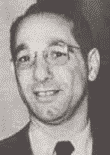
Gioe
Fratto was arrested many times beginning in the 1920s for things like mail fraud, vagrancy, kidnapping and on "general principles," but he was never convicted. Fratto was once arrested in the company of Frank Nitti, an early Outfit leader.
Fratto moved to Des Moines, Iowa, in 1939 to escape police pressure in Chicago and to help the Outfit expand its reach in the Midwest. Fratto replaced mobster Charles "Cherry Nose" Gioe who first opened up the area for the Outfit. Gioe was Fratto's mob mentor and his sponsor into the Outfit. Fratto was later a suspect in his murder in 1954.11
Fratto tried to present himself as a legitimate businessman in Des Moines. He operated the Manhattan Brewing Company. He made himself a popular member of the local community by contributing to charity, and befriending judges, politicians and members of law enforcement. He received many civic honors. These friendships allegedly helped Fratto stave off more than one police investigation into his criminal affairs.
He tried to become a beer baron. Fratto was able to obtain a hard-to-get permit to distribute beer across Iowa despite his notorious reputation. He was active as a labor consultant and was a friend of Teamsters Union boss James Hoffa.12
But the rackets were never far from his mind. He was alleged to be a partner in gambling operations in the city, and the local police thought he was involved in robberies and fencing of stolen goods. None of these charges ever stuck.
His high profile and criminal history eventually led to appearances before the Kefauver and McClellan Hearings in the 1950s, and constant police attention. Fratto never regained his respectability after this and faded from prominence, far away from the Outfit power center in Chicago. To one of his former associates, Fratto became a figure of ridicule, a "name dropper" who was "living in the past" without any "power" or "prestige" like he once had. Another called him "95 per cent windbag and 5 per cent truth."13
Louis Fratto died November 24, 1967, at the age of 60. He was being treated at the cancer facility of the University of Wisconsin at Madison. He had been ill for several years. Before he died, Fratto had been indicted in connection with fraudulent loans made to an aircraft manufacturer. His trial was set to begin on December 11.14
Fratto gives up the Outfit
Most of what Louis Fratto revealed about himself and organized crime is likely still buried in unreleased FBI files. But here is Intel that can be traced back to him from the limited number of declassified documents that are available. Fratto's statements are relatively easy to isolate because he was the only LCN informant assigned a symbol code that began with the prefix "OM."
Louis Fratto told the FBI that he had been a member of the Outfit for 40 years. He started off doing what he called "heavy work" as part of a crew made up of the "roughest, roughest" men in Chicago. The other crew members were Ted Virgilio, John Volek and Sam Battaglia, the future Outfit boss. Fratto said Battaglia was still a close friend.15
Fratto declined to say what "heavy work" he did for the Outfit, but considering the era and the reputation of the crew members, it likely involved violence and murder. Newspaper articles from the 1930s show crew members were twice accused of kidnapping wealthy individuals and holding them for ransom.16
The crew followed orders given to them by Charles Gioe, Murray Humphries or Tony Accardo. Fratto said Gioe and Humphries outranked Accardo in the Outfit at that time. The reputation for violence that Fratto developed early on in his criminal career later helped him to "lean on people when he needed to do so."
Besides talking about his personal history, Fratto told federal agents how he lamented what he described as the moral decline of the Outfit. He made the claim, common among informants, that the organization he had signed up for had changed for the worse. He said the Outfit had been taken over by "a bunch of 'animals' who have no morals or scruples." He fondly recalled the "loyalty and honor" that prevailed earlier under bosses Al Capone and Tony Accardo. This was a little disingenuous on the part of Fratto since his cousin and protege, Felix Alderisio, who had a fearsome reputation, was a prominent Outfit leader at the time.
Fratto gave the FBI a short Outfit history lesson when he described the different permutations of the organization in Chicago. He began by referring to the Unione Siciliana, a fraternal organization once popular in Illinois that was alleged to have links with organized crime:
"In the beginning" the Union Sicilione(sic) composed of only Sicilians in the "old country" was an extremely secretive organization with initiation rights and ceremonies attended to membership. This organization as such never existed in the United States although some of its members immigrated to this country and banded together. The American organization became known as the black hand and resorted to blackmail and extortion of Italians who had immigrated to the United States. According to the informant, this was a secret organization and may possibly have had initiation rights and ceremonies attended thereto. [Fratto] states that this organization later became the Mafia. It was the opinion of [Fratto] that there are three separate divisions of development of the LCN or "Outfit": that being the Union Sicilione, the second being the Mafia and the Black Hand, and the third being the "Outfit" as it is known today.
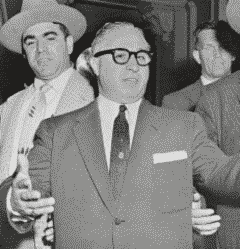
Fratto
In Fratto's mind, the Outfit was a mix of Old World criminality and American egalitarianism. The relaxation of ethnic purity rules and secret rites helped to create the Chicago Outfit. The unique Chicago experience forced the organization to open itself up to working with non-Sicilians and eventually with non-Italians altogether (within limits). The Outfit has probably had more non-Italians in senior positions through its history than any other Italian-American crime group.
Fratto said the Outfit had no formal initiation ceremony with finger pricking and the burning of a saint's image like other LCN crime families. Before an individual was considered for membership, he needed to perform various tasks, sometimes including murder, to the standard set by his sponsor. Senior members evaluated the performance of the tasks and decided whether to admit the prospective member. If accepted, the sponsor simply informed him that he was "in or "made." There was no getting out of the organization after that. Even a retired or inactive member had to obey an order given to him17
According to more recent informants, the Outfit seems have adopted a more traditional initiation ceremony in the post-Valachi era.
Fratto's long tenure in the Outfit not only provided him with historical perspective on the organization but also gave him a chance to meet a good portion of its membership. He helped to supply the FBI with what was likely the first ever comprehensive listing of Outfit members identified by another inducted member. Before then, Outfit membership lists were usually put together using information obtained from secret listening devices or unsubstantiated police Intel. (Fratto even threw his own brother and cousin under the bus, when he confirmed to the FBI that Frank Fratto and Felix Alderisio were both inducted Outfit members.)
Fratto told the FBI that Tony Accardo and Paul Ricca had temporarily retaken control of the Outfit in August, 1967, after his old friend, former boss Sam Battaglia, had been sent off to prison. Fratto broke down how Accardo and Ricca maintained control of the Outfit through a chain of command that isolated them from direct contact with the street.18
According to Fratto, Accardo met daily with John Cerone, his top lieutenant, to set policy and make decisions. Cerone would then "hand down" these instructions to Fiore Buccieri, the Outfit leader from the West Side of Chicago. Fratto called Buccieri the "relay man." Buccieri would then relay Accardo's orders to Gus Alex, who controlled the downtown Loop area. Alex had responsibility to maintain relations with corrupt politicians, judges and law enforcement officials who could help the Outfit.
Alex would then pass on Accardo's wishes to Outfit enforcer Felix Alderisio, another major player in the Loop. (Alderisio was said by other Outfit informants to "jump" when Alex gave him an order.) Alderisio would then communicate with veteran North Side boss Ross Prio until the orders reached the other relevant members of the organization.
The extra layers of protection between the Administration and the street would help to explain why Accardo never spent a night in jail despite helping to lead the Outfit for decades.
Fratto indicated the Outfit was now trying to diversify out of gambling and loansharking after law enforcement had made it difficult to make a profit. Outfit members were taking their "accumulated money" from traditional rackets and investing it in legitimate businesses, run by successful businessmen without criminal records. The investments gave Outfit members a steady income and the "cloak of respectability."19
Fratto said that while the Outfit had the "influence," "muscle" and "control" to make money "beyond its fondest dreams," it "ain't smart enough to intelligently invest and manage it."
For that reason, the Outfit used "Jews" to manage their money and carry out their orders. Fratto suspected this was common practice in every LCN crime family. They would rather "take $2.00 of $5.00 working with the Outfit and taking orders from the Outfit than only make $1.00 out of $5.00 operating on their own."
Fratto talks about other LCN crime families
Louis Fratto's disclosures were wide-ranging, concerning crime families from different states. Being the Chicago representative in Iowa gave Fratto an opportunity to have wider acquaintances than the average Outfit soldier.
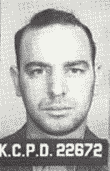
Civella
Fratto said the power of the Chicago Outfit extended to other crime families in the region. He said the Kansas City Crime Family was controlled by Chicago. Kansas City, in turn, controlled the St. Louis Crime Family and had since the Prohibition Era. The Detroit Crime Family also had some influence over St. Louis. Fratto said Anthony Giardano and John Vitale were the only St. Louis Crime Family members with any "stature;" they owed their strength to their close relationship to Sam Giancana.20
Fratto spoke favorably of Kansas City Crime Family boss Nick Civella. Fratto said Civella interests in Nebraska and Iowa were overseen by Robert Matthews. Matthews operated a high-stakes craps game that was protected from raids through payoffs to the Iowa attorney general and the county sheriffs department. Fratto revealed that the Kansas City Crime Family owned a hidden percentage of the Landmark Towers Hotel-Casino in Las Vegas.21
Fratto was able to identify LCN members in Denver, Rockford, Kansas City, St Louis, Detroit and Milwaukee, some for the first time. He claimed to personally have much influence over the LCN activities in Denver. He stated that Frank Balistrieri was boss of the Milwaukee Crime Family but said there wasn't much in Milwaukee "to be boss of."22
Fratto also told federal agents about the corrupt dealings between Washington, D.C., and the underworld. According to Fratto, Teamster Union boss Jimmy Hoffa was a close friend of Missouri Senator Edward Long. After Hoffa was convicted of bribery and jury tampering in 1964, and sentenced to eight years, Long worked with Teamster Attorney William Bufalino "to find a loophole" to keep Hoffa out of prison. Hoffa allegedly paid Long and mob lawyer Morris Shenker a $48,000 bribe for their efforts.23
Senator Long also allegedly tried to influence the investigative capabilities of the FBI to help benefit the Mafia. According to Fratto, Long, as chairman of a Senate oversight committee, threatened to investigate the alleged abuses of electronic surveillance by government agencies. Long was put up to this by Kansas City Crime Family boss Nick Civella. Civella hoped an investigation into the FBI's eavesdropping program would be able to "blunt investigations by Federal Agencies" into LCN activities in the future.24
Fratto told the FBI that he knew Tampa boss Santo Trafficante. He said he first met Trafficante in the early 1950s through his cousin Felix Alderisio. All three men were inducted LCN members by this time. They had a mutual friend in gambling boss Meyer Lansky. According to Fratto, Trafficante controlled all jukeboxes and gambling in Tampa, and much of Daytona Beach, Florida. Trafficante and Kansas City Crime Family boss Nick Civella were friends and did business together in Florida. Charles Hutter was Civella's man in Florida.25
The FBI's Tampa field office wanted Fratto to come to Florida, make contact with Trafficante and gather information about his criminal activities. Fratto thought he could get Trafficante to implicate himself. Despite Fratto's enthusiasm, the visit never happened. Fratto was terminally ill and only had a few months to live.26
Prime suspect:
Charles "Chuckie English" Inglesia
In September 1966, FBI agents visited Sam Giancana's favorite hangout in an effort to track him down. Giancana had gone into hiding after serving a yearlong prison sentence. He had also been removed as Outfit boss around this time. The agents asked Giancana's henchmen if they had seen him. The encounter later made its way into two separate FBI reports.
In one version, the agents reported that they were told by George Colucci and Chuckie English, two veteran Outfit members, that Giancana had been at the restaurant earlier but had left.27
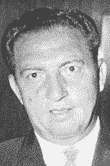
English
In another retelling of the same encounter found in a second report, the agents again wrote that Giancana had left the restaurant but added they were told this information by George Colucci and a second individual whose identity is redacted. The redacted individual's name was then followed by the informant symbol code "CG-REDACTED-PC," indicating the FBI considered this person to be a source. Based on the first report, there is no doubt that Chuckie English was the individual assigned the informant code.28 But was he really an informant?
It wouldn't be unreasonable to think English might have been receptive to an approach from the FBI. English was very close to Sam Giancana and owed much his criminal success to him. After Giancana was replaced as Outfit boss, English fell from favor with the new regime and his criminal career sagged. (In fact, he was later murdered.)
But if English did cooperate, why wasn't he consulted about Giancana's murder in 1975? An analysis done by the FBI right after the murder doesn't appear to include any Intel supplied by him. Presumably, English would have had something to say about the death of his friend and mentor. So what happened? Did English only flirt with the FBI back in 1966 but not follow through? Did he cooperate for a time and then stop altogether? Or did an overly hopeful FBI agent designate English an informant only to pad his statistics?29
Former FBI agent William Roemer includes an odd episode in his biography of Tony Accardo that may shed some light on the matter. Roemer oversaw the FBI's informant development program in Chicago in the 1970s. He later wrote books about his experiences.
According to Roemer, after he left the FBI and retired to Arizona, he received a visit from Chuckie English. This was two years before English was murdered in 1985. In what must be the strangest request for a character reference in FBI history, English said that he had been sent by his Outfit superiors to ask Roemer if he thought Rocky Infelise, an up-and-coming mobster, was still involved in drug trafficking. (He had a previous conviction.) Apparently, Infelise was to get an Outfit promotion if Roemer said he was clean.30
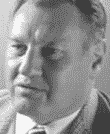
Roemer
This anecdote, as it's presented, seems improbable. Why would an old-time mobster go to the trouble to travel all the way to Arizona to consult Roemer, a retired FBI agent? Why would the Outfit want to put a target on Infelise's back? And how did English know where Roemer lived? The visit only begins to make sense if we presume a prior friendly relationship between the two men. The kind existing between, say, an informant and his handler.
In one of his fiction books, The War of the Godfathers, Roemer's alter ego, Bill Richards, receives a similar visit in Arizona from a nameless Chicago mobster. But in the book, the visitor is also described by Roemer as one of his former informants.31 Could this character be based on English? A speculative interpretation would be that it's meant to recall English's real visit to Roemer in 1983. While the book is a work of fiction, it does incorporate true historical details into the story and leaves the impression sometimes that it's peppered with facts about real mobsters that the irrepressible Roemer couldn't responsibly include in his non-fiction books.
Notes
1 FBI, Top Echelon Criminal Informant Program (TECIP), Chicago Office, Jan. 20, 1967, p. 17, NARA Record Numbers 124-90059-10029 and 124-90059-10073. Two of the other informants listed in this report were likely Richard Cain and Dominic "Butch" Blasi.
2 FBI, Senator Edward V Long, Memorandum Mr. Gale to Mr. Deloach, Jan. 2, 1968, NARA Record Number 124-10289-10239.
3 FBI, La Cosa Nostra, New York Office, Oct. 20, 1967, p. 90, NARA Record Number 124-10277-10308.
4 FBI, La Cosa Nostra, Chicago Office, Sept. 25, 1967, p. 22, NARA Record Number 124-10293-10279.
5 FBI, La Cosa Nostra, New York Office, Oct. 20, 1967, p. 90, NARA Record Number 124-10277-10308.
6 FBI, Senator Edward V Long, Mr. Gale to Mr. Deloach, Jan. 2, 1968, NARA Record Number 124-10289-10239.
7 FBI, La Cosa Nostra, Chicago Office, Aug. 23, 1968, NARA Record Number 124-10288-10421.
8 Terkel, Studs, and Sydney Lewis, Touch and Go: A Memoir, New York: The New Press, 2007, p. 68.
9 Fox, Stephen, Blood and Power: Organized Crime in Twentieth-Century America, New York: William Morrow and Company, 1989, p. 97.
10 Mollenhoff, Clark R., Strike Force: Organized Crime and the Government, Englewood Cliffs NJ: Prentice-Hall, Inc., 1972, p. 40.
11 May, Allan, "The Original Teflon Don: Des Moines's Louis Fratto," Oct. 15, 2009, crimemagazine.com; Chicago Tribune, Nov. 25, 1967.
12 FBI, Lew Farrell, Omaha Office, Sept. 23, 1960, p. 45, NARA Record Number 124-90008-10029.
14 Chicago Tribune, Nov. 25, 1967.
15 FBI, La Cosa Nostra, Omaha Office, Sept. 11, 1967, NARA Record Number 124-10293-10352.
16 Chicago Tribune, July 28, 1933; Chicago Tribune, Feb. 10, 1935.
17 FBI, La Cosa Nostra, Chicago Office, Sept. 25, 1967, p. 12, NARA Record Number 124-10293-10279.
18 FBI, La Cosa Nostra, New York Office, Oct. 20, 1967, p. 64, NARA Record Number 124-10277-10308; FBI, Gus Alex, Chicago Office, Oct. 25, 1967, NARA Record Number 124-10209-10364.
19 FBI, La Cosa Nostra, Chicago Office, Aug. 23, 1968, NARA Record Number 124-10288-10421.
20 FBI, La Cosa Nostra St. Louis Division, St. Louis, Sept. 12, 1967, NARA Record Number 124-10293-10261.
21 FBI, La Cosa Nostra, New York Office, Oct. 20, 1967, NARA Record Number 124-10277-10308; FBI, La Cosa Nostra, Omaha Office, Sept. 11, 1967, NARA Record Number 124-10293-10352.
22 FBI, La Cosa Nostra Denver Division, Denver Office, Sept. 11, 1967, NARA Record Number 124-10293-10347; FBI, La Cosa Nostra, Milwaukee Office, Sept. 11, 1967, NARA Record Number 124-10293-10341.
23 FBI, Senator Edward V Long, Jan. 2, 1968, NARA Record Number 124-10289-10239.
24 Kansas City Teamster boss Roy Williams was said to be Long's contact with the underworld. Long backed off his plan to investigate the surveillance programs after the FBI leaked details of his relationship with organized crime.
25 FBI, Santo Trafficante Jr., Tampa Office, Sept. 14, 1967, NARA Record Number 124-10200-10228; FBI, La Cosa Nostra, Tampa Office, Aug. 25, 1967, NARA Record Number 124-10200-10225; FBI, Santo Trafficante Jr., Tampa Office, July 12, 1967, NARA Record Number 124-10201-10354.
26 FBI, Santo Trafficante Jr, Tampa Office, Sept. 5, 1967, NARA Record Number 124-10200-10225.
27 FBI, Samuel M. Giancana, Chicago Office, Sept. 27, 1966, NARA Record Number 124-10198-10125.
28 FBI, Samuel M. Giancana, Chicago Office, Sept. 19, 1966, NARA Record Number 124-10198-10118.
29 Villano, Anthony, with Gerald Astor, Brick Agent: Inside the Mafia for the FBI, New York: Quadrangle, 1977. FBI agents regularly manipulated informant statistics for monetary gain. FBI, Samuel M. Giancana, Chicago Office, Nov. 30, 1976, NARA Record Number 124-10205-10086. The available report appears to have pages missing. It only consults informants thought to be Richard Cain, Ralph Pierce and Dominic Blasi. See Informer, July 2011 "Roemer's Men in the Outfit."
30 Roemer, William F. Jr., Accardo: The Genuine Godfather, New York: Donald I. Fine, Inc., 1995, p. 420-421. Chicago Outfit member Nicholas Calabrese later testified in court that Infelise was inducted into LCN in 1983.
31 Roemer, William F. Jr., War of the Godfathers, New York: Donald I. Fine, Inc., 1989, p. 219. Though War of the Godfathers is a fabricated tale of a mob war that never occurred, its publishers have labeled it "non-fiction" and "true crime."
